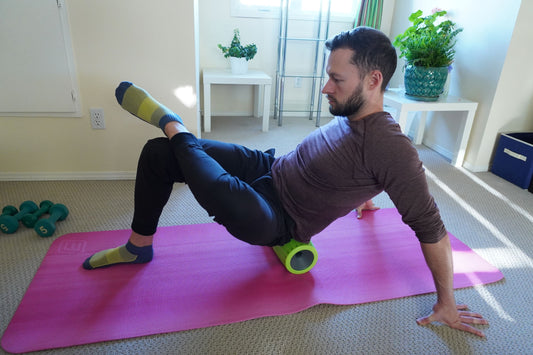As a physical therapist and athlete living in the modern era of overused Google searches, it’s often a challenge to market my services when it comes to injury prevention. When speaking to other therapists, my feelings are almost always validated.
I saw a new patient recently who has been experiencing elbow pain for more than six months. She exercises regularly — a combination of CrossFit, yoga and running. When she complained to a trainer about her pain, they modified several movements in her workout, as a good fitness professional should.
She later asked the trainer if they thought she would benefit from physical therapy, to which they stated that the pain would probably go away on its own with some stretching. Long story short, her pain persisted throughout workouts and in daily life for the next several weeks.
More often than not, this is the story patients share when they come to see me for the first time. Usually, they have been dealing with pain and injury for months_. _Over time, my frustration caused by these stories diminished and was replaced by a desire to advocate.
Here are six things I wish all my future patients knew:
1. The faster you act, the faster you will heal.
No. Not every little injury is physical therapy–appropriate, but if something has been nagging you for weeks, months or lord help us even years, it’s going to take at least half that amount of time to get better. The sooner you address the issue, the better your outcome.
2. When pain increases, that means stop.
If you’re experiencing shoulder pain when practicing overhead movements that gets worse as you move through the workout, that’s a big ol’red flag. If you experience pain that’s unchanging as you move through a workout, that’s a yellow flag. When pain increases, that means inflammation is increasing, which prolongs the healing process.
If you have shoulder pain, this does not mean you need to stop all shoulder movements completely. Using a physical therapist gives you a sounding board on the best course of action for your particular situation. Athletes often get themselves in more trouble with complete rest (think: loss of motion, stiffness, frozen shoulders) rather than activity modification.

3. If your doctor tells you to “rest it,” get a new doctor.
Ninety-nine percent of the time, rest is not the answer. Generally speaking, resting an injury never leads you to discover why it occurred in the first place. Then when most athletes return to full activity, they become even more prone to injury because they are now de-conditioned in addition to injured. An athlete also may have less available range of motion from resting, digging them into an even deeper hole and an inevitable prolonged recovery period.
4. A massage therapist alone cannot diagnose or cure injuries.
If you’re injured, a massage therapist alone is not the answer to your pain. Yes, a good massage therapist can be an integral piece of your recovery puzzle. However, if you’re not finding the root cause of your pain, it is bound to return, sometimes with a vengeance. Physical therapists spend years in school learning about differential diagnosis, anatomy, specific exercise and manual therapy techniques that a massage therapist simply does not have in his or her tool belt.
Recovery, relaxation and muscle soreness are among perfect reasons to seek out a massage therapist. Injury diagnosis, however, is not.
5. Google is not the answer.
We know the internet is a valuable resource, and it’s fine to Google your symptoms, but please leave the differential diagnosis up to us (physical therapists). After three years of postgraduate work and literally dissecting a human body in a cadaver lab, I’m fairly certain I can provide you with more sound objective advice than a Google search result.
6. Most states offer direct access.
Meaning: You don’t have to waste time or a copay on an M.D. to get a PT referral. Also, there are now many cash-based physical therapy practices where you can use Health Savings Account dollars and work with a PT of your choosing. Find someone who is educated in your area of interest and actually looks like someone you can talk to about your injury. They may even possess a strong background in your recreational activity of choice: powerlifting, CrossFit, intramural dodgeball — you name it. Why would you go see a therapist who doesn’t look healthy, active and relatable?
There are endless diagnoses that can be solved without the introduction of medication, surgery or rest through physical therapy. Find a therapist who works in or closely with a gym and has experience with athletes. Not all therapists are created equal. Find someone who actually knows the mechanics of a snatch, perfect running form or can pinpoint the mechanical faults in the squats you’re practicing in boot-camp class. A good therapist will use these elements to create a treatment plan to keep you doing what you love most — pain-free.
Written by Genevieve Gyulavary for Oxygen Magazine and legally licensed through the Matcha publisher network. Please direct all licensing questions to legal@getmatcha.com.
Foam rolling and self-massage are an important part of the recovery process! Try RAD Roller, massage tools recommended by physical therapists all over the world.



















